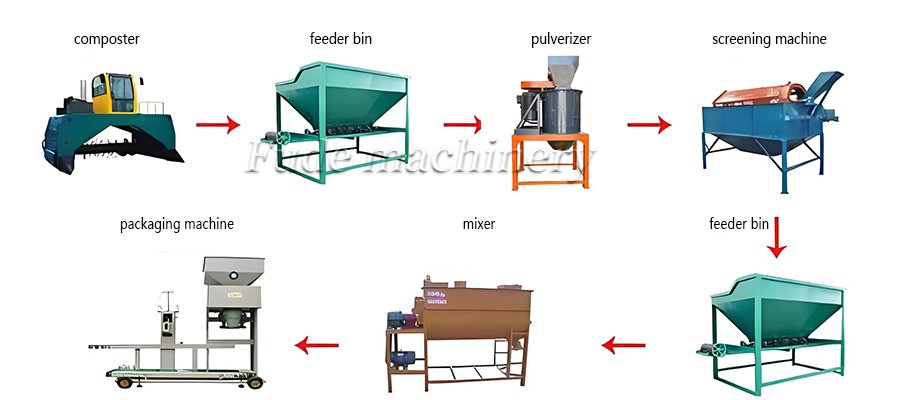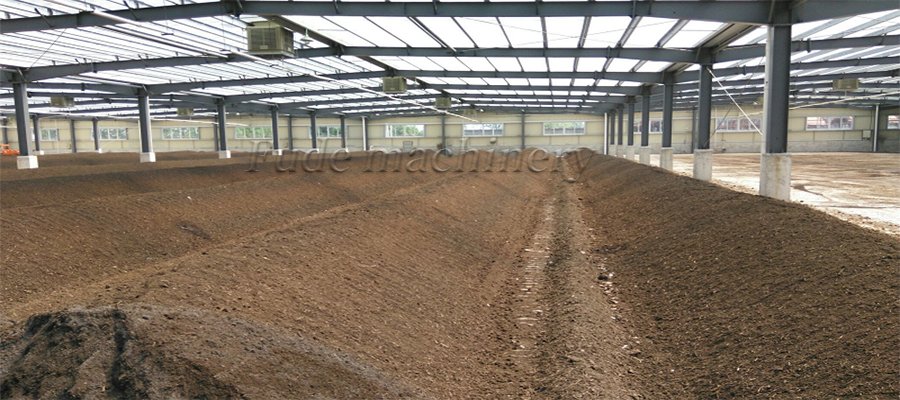How to Understand the Mass Production of Compound Fertilizers
180Drum pelletizing is the fundamental process for large-scale production of compound fertilizers.
View detailsSearch the whole station
Composting machines play an increasingly important role in modern agriculture and environmental protection. Composting, as an effective way of waste disposal and resource recycling, can not only improve soil structure, but also reduce dependence on chemical fertilizers and promote the development of sustainable agriculture. Composting equipment is the key to achieving an efficient composting process. They improve composting efficiency and quality through mechanized means.
There are many types of composting equipment. Depending on the application and material characteristics, they can be divided into compost turners, fermenters, screeners and shredders. The compost turner is the most common equipment in the composting process. Its main function is to accelerate the decomposition process of the materials by mechanical turning. The compost turner periodically stirs the compost, increases air circulation and regulates temperature and humidity, thus providing a good growth environment for microorganisms and significantly shortening the composting cycle.

The fermentation tank is an enclosed composting equipment, suitable for processing materials with high moisture content, such as food waste. Compared with traditional open-air composting, fermentation tanks have obvious advantages. Not only can it effectively control odor and leachate contamination, but it can also precisely control fermentation conditions through an automated system to improve composting efficiency and performance. Fermentation tanks are generally equipped with temperature, humidity and oxygen sensors, which adjust the fermentation environment in real time through data feedback to ensure the stability of the composting process.
Screens and shredders play a role in the post-composting processing stage. Screening machines are used to separate not fully decomposed materials and finished compost to ensure compost quality and uniformity. The pulverizer is used to process the initial material by crushing the large pieces of material into small particles, thus increasing the specific surface area of the material and accelerating the decomposition process of the microorganisms.
In practical applications, composting equipment not only improves the efficiency of the composting process, but also significantly reduces labor intensity and operating costs. Most modern composting equipment has automated and intelligent functions and can be flexibly adjusted according to different materials and processing scales to improve resource utilization. At the same time, these devices are also designed with environmental protection and energy saving in mind, reducing the impact on the environment.

The application of composting machine is not limited to agricultural field, but also widely used in urban garbage disposal, park greening and industrial waste disposal. In urban waste treatment, composting equipment can effectively reduce the amount of landfill, reduce the occupation of land resources and groundwater pollution. In the maintenance of parks and green belts, organic fertilizers produced by composting equipment can improve soil fertility and promote healthy plant growth.

Composting equipment is a special device to optimize the fermentation process of organic waste through technical means, and its core value is to improve composting efficiency, quality and environmental protection. Choosing the right composting equipment requires comprehensive consideration of the processing scale, process type, automation degree and environmental standards, in order to achieve a win-win situation for both economic and environmental benefits.
In summary, composting equipment, as an important environmental protection technology, provides strong support for the realization of waste resource utilization and sustainable agricultural development. With the continuous advancement of science and technology and the improvement of environmental awareness, composting equipment will play a more important role in the future, helping to improve the overall ecological environment and the green transformation of agriculture.
Drum pelletizing is the fundamental process for large-scale production of compound fertilizers.
View detailsThis 5 t/h powdery biofertilizer making line is equipped with well – engineered equipment that plays a critical role at every production stage.
View detailsthe prospects for production and application of cow manure-based water-soluble fertilizer are very broad.
View detailsIn the ever-growing organic farming industry, efficient fertilizer production is crucial.
View details